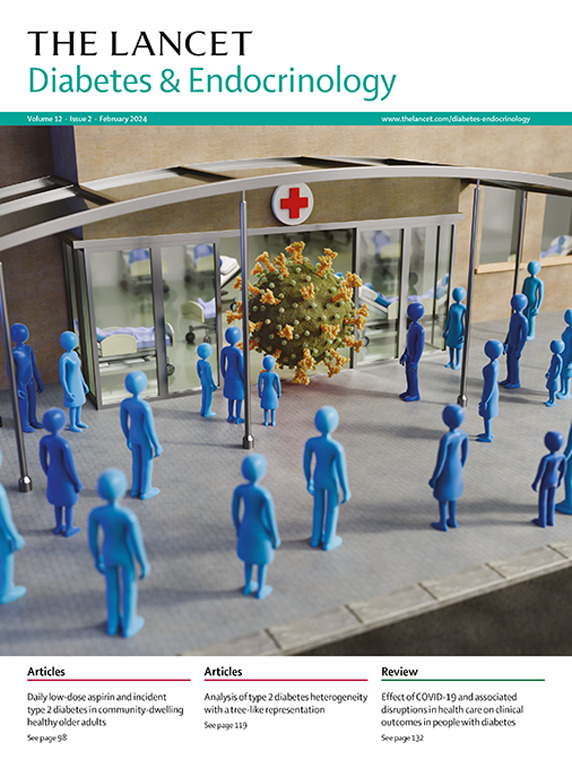Glucocorticoid-induced osteoporosis: novel concepts and clinical implications
IF 41.8
1区 医学
Q1 ENDOCRINOLOGY & METABOLISM
引用次数: 0
Abstract
Despite advances in targeted therapies, treatment with glucocorticoids remains a mainstay in the management of various immune-mediated diseases. High cumulative doses of exogenous glucocorticoids lead to a spectrum of side-effects, in particular increased fracture risk. Fragility fractures might result in immobility, frequent admission to hospitals, and loss of quality of life. Glucocorticoid excess impairs bone microarchitecture and bone strength and can cause multiple vertebral fractures. Fracture risk at other skeletal sites is also enhanced and triggered by an increased risk for falls. Glucocorticoid-induced osteoporosis results from direct suppression of osteoblast and osteocyte function, a transient stimulation of osteoclast formation and activity, catabolic effects on bone matrix and muscle protein, and metabolic alterations. Assessment of fracture risk using the Fracture Risk Assessment Tool (FRAX) with dual-energy X-ray absorptiometry represents the first diagnostic step; its predictive value can be improved by applying specific adjustments such as the trabecular bone score. This Review highlights how the bone microenvironment responds to supraphysiological glucocorticoid concentrations, and discusses the basis for skeletal fragility and fractures. We review the use and limitations of current and emerging imaging technologies and prediction tools, and discuss bone-forming and antiresorptive treatment strategies and their use to prevent and treat glucocorticoid-induced osteoporosis.糖皮质激素诱导的骨质疏松症:新概念和临床意义
尽管靶向治疗取得了进展,但糖皮质激素治疗仍然是治疗各种免疫介导性疾病的主要方法。外源性糖皮质激素的高累积剂量会导致一系列副作用,特别是骨折风险增加。脆性骨折可能导致行动不便、频繁住院和生活质量下降。糖皮质激素过量会损害骨微结构和骨强度,并可能导致多处椎体骨折。其他骨骼部位的骨折风险也会因跌倒风险的增加而增加和触发。糖皮质激素诱导的骨质疏松症是由成骨细胞和骨细胞功能的直接抑制、破骨细胞形成和活性的短暂刺激、对骨基质和肌肉蛋白的分解代谢影响以及代谢改变引起的。使用骨折风险评估工具(FRAX)和双能x射线吸收仪评估骨折风险是诊断的第一步;它的预测价值可以通过应用特定的调整如小梁骨评分来提高。这篇综述强调了骨微环境对超生理糖皮质激素浓度的反应,并讨论了骨骼脆性和骨折的基础。我们回顾了当前和新兴的成像技术和预测工具的使用和局限性,并讨论了骨形成和抗吸收治疗策略及其在预防和治疗糖皮质激素诱导的骨质疏松症中的应用。
本文章由计算机程序翻译,如有差异,请以英文原文为准。
求助全文
约1分钟内获得全文
求助全文
来源期刊

The Lancet Diabetes & Endocrinology
ENDOCRINOLOGY & METABOLISM-
CiteScore
61.50
自引率
1.60%
发文量
371
期刊介绍:
The Lancet Diabetes & Endocrinology, an independent journal with a global perspective and strong clinical focus, features original clinical research, expert reviews, news, and opinion pieces in each monthly issue. Covering topics like diabetes, obesity, nutrition, and more, the journal provides insights into clinical advances and practice-changing research worldwide. It welcomes original research advocating change or shedding light on clinical practice, as well as informative reviews on related topics, especially those with global health importance and relevance to low-income and middle-income countries. The journal publishes various content types, including Articles, Reviews, Comments, Correspondence, Health Policy, and Personal Views, along with Series and Commissions aiming to drive positive change in clinical practice and health policy in diabetes and endocrinology.
 求助内容:
求助内容: 应助结果提醒方式:
应助结果提醒方式:


